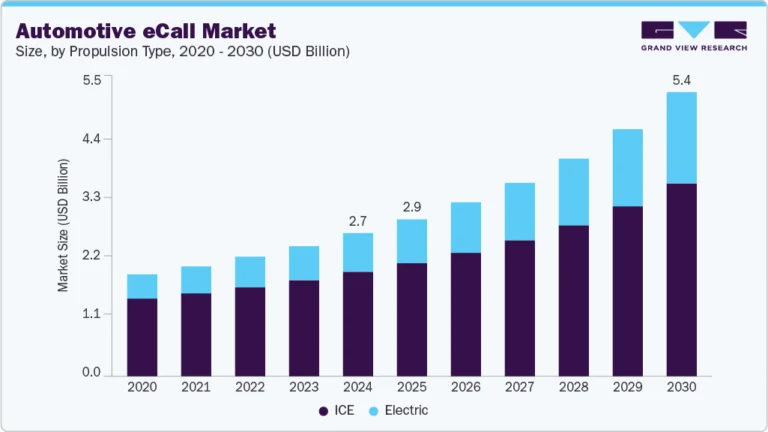Optical Transport Network Hardware Market Size, Share & Trends Analysis grow at a CAGR of 7.9% from 2024 to 2030

The global optical transport network hardware market size was valued at USD 19.21 billion in 2023 and is projected to grow at a CAGR of 7.9% from 2024 to 2030. Technological innovations in the telecommunications industry and the constant demand for high-speed communications by consumers and enterprises are expected to enable market expansion. Carriers are compelled to improve data transmission speeds and enhance network capacity to address the high-speed internet requirements of these end-users while improving bandwidth and minimizing latency issues. Growing congestion issues in mobile networks have driven the need for a higher level of bandwidth to maintain pace with the increasing network traffic. A growing demand from carriers to manage network costs effectively has resulted in a shift towards multipurpose OTN architectures.
Request a free sample copy or view report summary: https://www.grandviewresearch.com/industry-analysis/global-otn-hardware-market/request/rs1
Growing congestion issues in mobile networks have driven the need for a higher level of bandwidth to maintain pace with the increasing network traffic. A growing demand from carriers to manage network costs effectively has resulted in a shift towards multipurpose OTN architectures.
Moreover, the growing proliferation of 40G & 100G technologies is expected to fuel the growth of the OTN hardware market in the coming years. The former allows data transmission at 40 gigabits per second, while the latter does the same at 100 gigabits per second. Increasing capital investment in installing and maintaining network equipment is anticipated to facilitate the demand for these components. The emergence of smart cities has highlighted the significance of having an efficient communication infrastructure, as it dictates the operational capabilities of cities and the way they offer services to citizens. Governments globally have launched a range of internet initiatives and fiber policies to allow free public access to an advanced network infrastructure. For instance, in China, the government aims to make all its public services available online to improve citizen convenience and accelerate the pace of solving their issues or queries. The ultra-high bandwidth offered by optical networks supports such initiatives by providing high security and avoiding data loss and network freezing. Such factors are expected to enable market expansion.
The deployment of OTN hardware enables better networking capabilities with faster data rates, thereby allowing network carriers to scale and handle the tremendous data traffic over the network. Technological innovations by OTN hardware manufacturers have led to the introduction of advanced features that add value to data transfer in a network. The OTN hardware equipment combines an optical channel data switching unit (ODU) with advanced features such as tandem connection monitoring (TCM). The rapid expansion in Ethernet services and changing user requirements are driving advancements in OTN hardware components. They serve a variety of data- and network-intensive applications such as video, voice, and storage by facilitating the transparent handling of the Ethernet and providing opportunities for better operations, administration, maintenance & provisioning management, and service transparency. The constantly rising popularity and use of social media, live webcasting, video conferencing, and online gaming have led to substantial growth in the adoption of OTN technology.
OTN Equipment Insights
The optical packet platform systems segment led the market with a revenue share of 37.1% in 2023. Rapid advancements in the telecom industry and a constant demand for cost savings and latency minimization in network performance are anticipated to drive segment growth during the forecast period. Telecom equipment companies have been compelled to introduce advanced solutions to address end-user requirements and improve their competitive positioning. For instance, Infinera Corporation, which caters to the telecommunications industry by offering a range of Wavelength division multiplexing-based packet optical transmission equipment and IP transport technologies, has multiple products in the packet optical networking segment. These include the XTM application-optimized metro access and aggregation platform, the 7100 packet optical transport series that provides flexible and future-proof networks, and the mTera packet optical transport platform that offers multi-service network aggregation and universal switching capabilities.
The OTN switching segment is anticipated to witness substantial growth during the forecast period. The demand for OTN switching equipment has increased as enterprises focus on migrating from 10G to 100G and beyond, leading to its use as a high-transmission technology. OTN switching has gained significant momentum as it can utilize high-speed wavelengths efficiently by combining traffic from various client interfaces with traffic from other directions. This results in the need for fewer wavelengths and high-speed line interfaces, which leads to substantial cost savings in the case of long-haul networks. Also, these solutions offer a greater spectral efficiency due to using a few unique wavelengths, ensuring reduced risk of wavelength-blocking situations and leading to extended functioning of DWDM networks. These benefits are expected to drive significant contributions from this segment to the overall market in the coming years.






